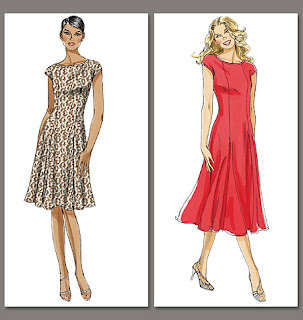I had made a muslin for my daughter in law for a short, mostly straight skirt, with a faced waistline. The fit was good but when she wanted pockets, I went in search for a skirt pattern with slash pockets and no waistband. I really didn't feel like re-inventing the wheel. I was surprised when I couldn't find a pattern exactly the way I wanted it. So, I began reading up on how to create this. I also needed to be careful not to interfere with the darts in the skirt front.
Here is my first pattern draft with the pocket drawn out in red.
- I started my pocket 2" in from the side seam and, as you will see later in this post, I think it was not in far enough. I ended the pocket about 6 inches down and then drew in a 1/2 inch seam allowance.
- Once the beginning point for the pocket is established on the waist, I drew out another line on the waist an additional 2 inches in for the top of the pocket to attach and be sewn in to the facing.
- From that point, I drew a line down about 7 inches and began to shape the pocket bag, connecting it to the side seam, making sure to leave enough of the pocket bag to sew into the seam allowance. And, I added plenty of notches to match everything up later.
Once this was drawn out, I placed more tracing paper on top to create the actual pattern piece with the pocket edge.
Then the pocket facing and the pocket bag were traced over the original pattern. The facing, of course, will be cut from the fashion fabric. For the bag, since the fashion fabric is wool, I will use a lining fabric to cut down on bulk. The pocket opening will have to be stabilized so it will not stretch out with use.
Muslin made up. As I mentioned earlier in the post, I had only drawn my pocket beginning 2 inches in from my side seam. I think that is way too too close. As you can see, I've drawn a line on the muslin an inch further in to see if that will be a better placement. I think it will be.
Hopefully, this all works out. I'll post more once the muslin has been fitted.
Slan








